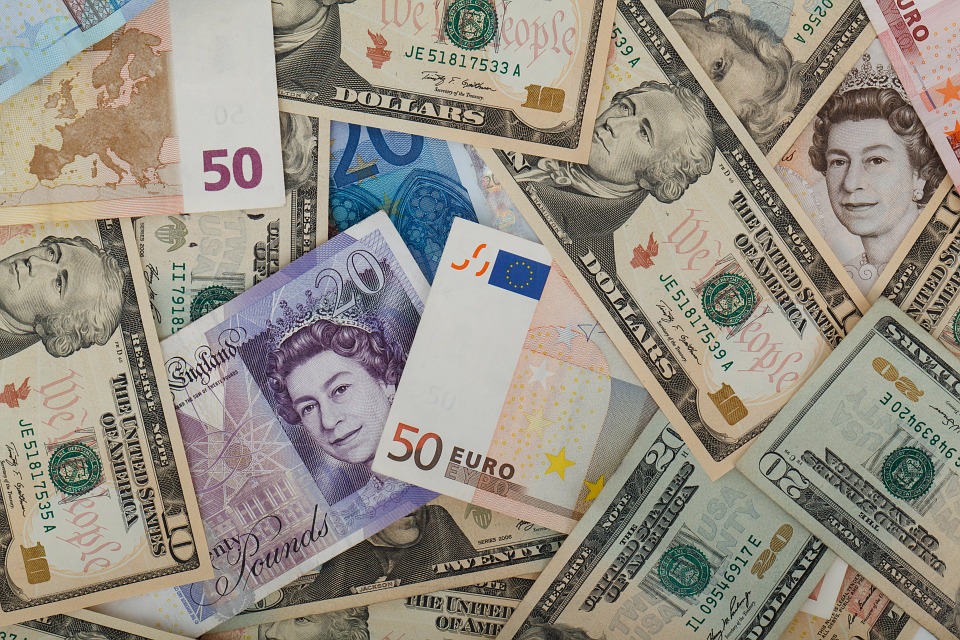Monex: Dollar stijgt na bekendmaking Amerikaanse stimuleringsmaatregelen
Monex: Dollar stijgt na bekendmaking Amerikaanse stimuleringsmaatregelen

Hieronder volgt een commentaar in het Engels van Ranko Berich, Head of Research bij Monex Europe op de koersbewegingen van de Amerikaanse dollar, euro en het Britse pond.
USD
The dollar continued to surge yesterday as further stimulus measures were unveiled. The Bloomberg DXY index, which places less weighting on JPY and EUR, rose to a 3-year high, as the greenback took over a percentage point against all of the G10 currency board. Firstly, the Federal Reserve continued to prod and poke markets to find the cure to the dollar liquidity shortage. On top of a $1bn repo auction, split over two $500bn allocations, the Fed announced another 2008 tool to control non-financial corporate debt markets. A new Commercial Paper Funding Facility will purchase up to $1trn of debt with a two-year maturity backed by a $10m credit assurance for default by the Treasury. The Fed then decided to continue providing daily $1trn in repo auctions and then announced another crisis-era policy in the form of a primary dealer credit facility to absorb collateral and provide short-term loans up to 90-days. All of these measures provided dollar liquidity to markets which are screaming for it after the 3-month US Libor jumped its most since 2008. But this didn’t prompt the dollar rally - that was left up the White House. Led by Treasury Secretary Steven Mnuchin, the Trump administration backed a plan to inject $1.2trn of fiscal stimulus into the economy, with $500bn of that in the form of helicopter money. The government plans to release two waves of cheques to US households in stints of $250bn at a time, which would add around $3000 to each American on average over the course of a fortnight. On top of the helicopter drop, which some Republican senators said has more support from the GOP than payroll breaks, the fiscal package seeks to give $50bn in assistance to the airline industry and up to $500bn to boost small businesses. The latter injection would be split into $300bn for small business loans and $200bn for unspecified stabilisation loans which is aimed at providing backstops for vulnerable industries such as the retail sector. The plan is subject to senate approval after the coronavirus relief bill was unanimously passed in the house on Monday, with many suggesting the senate could vote on it as late as Friday evening. The Trump administration would need bipartisan support to get the bill through a chamber held by the Democrats, with 60 votes being the magic number to look out for. The fiscal windfall sent the dollar on a tear, with nothing standing in its path - a theme that may be set to continue playing out today. On top of all of these measures, the Fed will also begin reviewing easing bank leverage and accounting rules to improve the transmission of credit. We get another round of QE from the Fed today ranging across the whole curve, while US futures hit limit down in the S&P and DJIA.
EUR
The euro continues to hover near lows for the month against the US dollar, as markets await firm news of fiscal policy stimulus. Even though the coronavirus crisis is worse in Europe than in the US and UK, and Eurogroup finance ministers reportedly discussed a coordinated fiscal stimulus earlier this week, eurozone-wide stimulus measures of the scale seen elsewhere have yet to be announced. The €500bn European Stability Mechanism is being discussed as a possible source of stimulus funds, although this would pale in comparison to the more than $1trillion of direct cash transfers proposed by the US Treasury yesterday. The reticence in some circles of European policymakers to engage in the type of stimulus that is increasingly becoming consensus elsewhere was highlighted by comments from Robert Holzmann in an interview and a formal statement. The head of the Austrian central bank told a newspaper that meeting market expectations for easing was “impossible”, and that “every economic crisis is also a cleansing”. He later clarified in a statement that monetary policy has not reached its limits and that the monetary toolbox was “well stocked”. Holzmann’s sentiment is increasingly viewed as not only mistaken but dangerous by policymakers and market participants outside of the EU. The ECB itself issued a statement in response to Holzmann’s comments, saying that it “stands ready to adjust all of its measures, as appropriate”. The ECB will begin to release USD liquidity from swaps with the Federal Reserve today, hopefully easing pressure on dollar funding for European financial institutions.
GBP
Sterling continued to weaken against the US dollar as concerns over liquidity and funding stress trumped all other considerations in currency markets, and policymakers in the UK and US undertook historic fiscal easing measures in response to the worsening coronavirus pandemic. Chancellor Rishi Sunak unveiled a sweeping package of state loan guarantees worth £330 billion, and £20bn in direct transfers to struggling businesses, as well as plans to offer a mortgage holiday of up to three months to homeowners. The support for mortgage borrowers comes on top of the Bank of England’s rate cuts. In addition to these measures, Rishi Sunak borrowed a line from former European Central Bank President Mario Draghi in promising to do “whatever it takes” to support the economy. Notably, with US authorities now seriously considering “helicopter” money, possible future measures may include direct cash transfers to consumers and hospitality businesses or nationalisation of industries such as airlines. In coordination with the Treasury’s measures, the Bank of England launched a new lending scheme yesterday, promising to provide liquidity for UK corporates by buying commercial paper, a form of short term bonds. This measure was deployed during the 2008 crisis and is aimed at expanding the BoE’s role as a lender of last resort.
